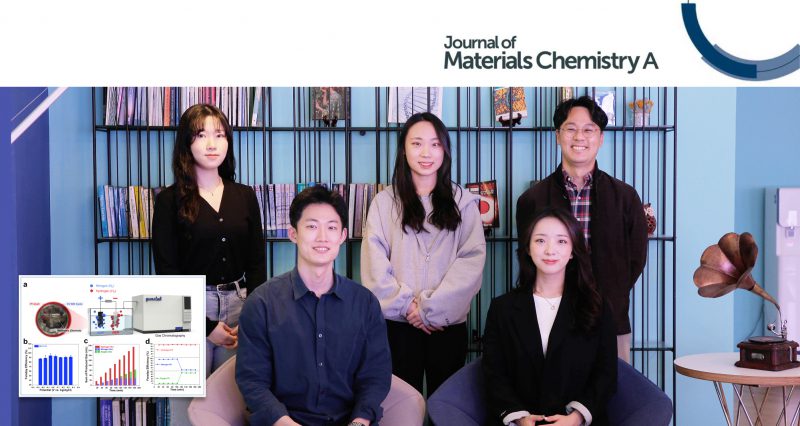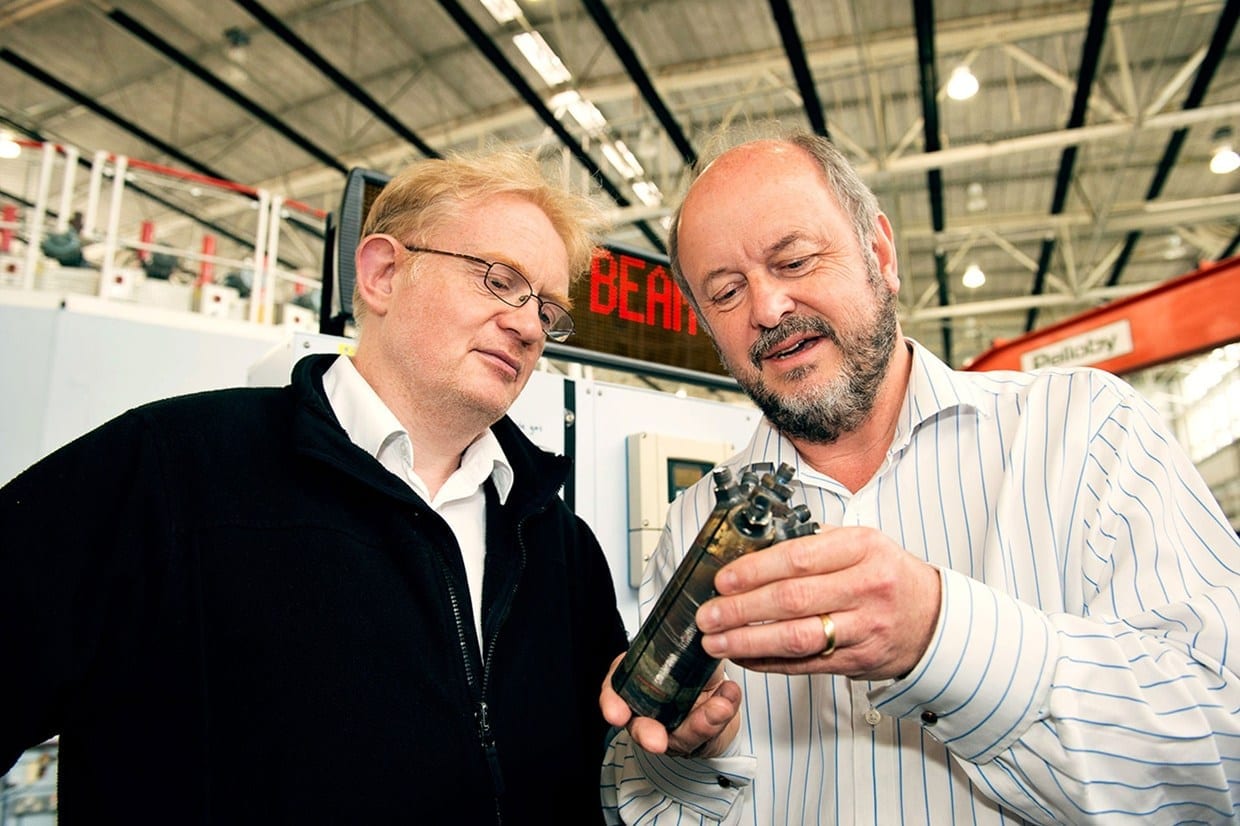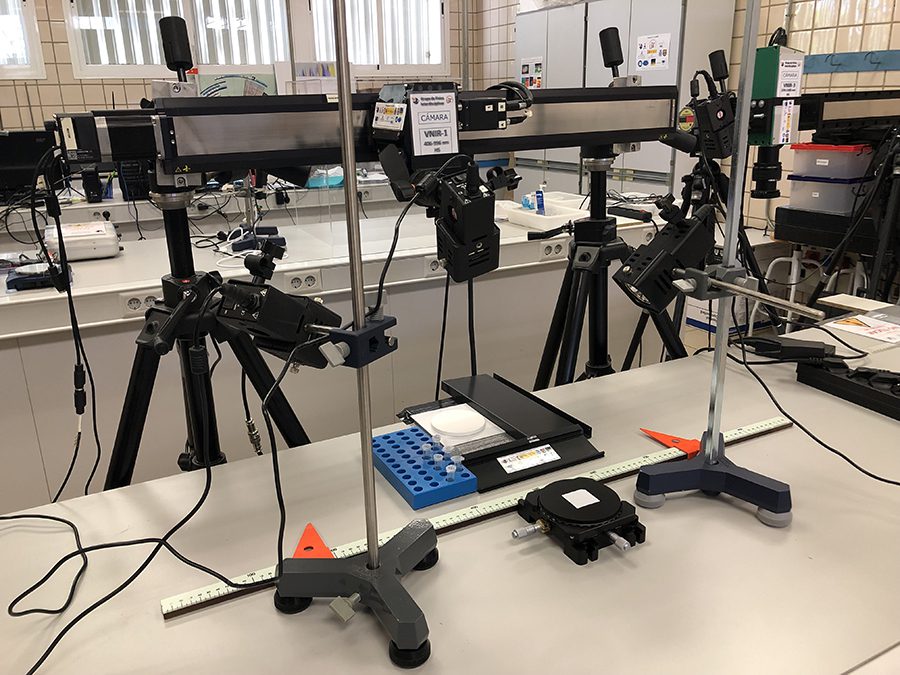
Professor Guntae Kim and his research team in the School of Energy and Chemical Engineering at UNIST.
A research team, led by Professor Guntae Kim in the School of Energy and Chemical Engineering at UNIST has announced a breakthrough in technology that efficiently converts liquid ammonia into hydrogen. Their findings have also attracted significant attention from academic research communities owing to its new analysis protocol, capable of finding optimal process environments.
In this study, the research team succeeded in producing green hydrogen (H2) in large quantities with a purity of nearly 100 percent by decomposing liquid ammonia (NH3) into electricity. Besides, according to the research team, such method consumed three times less power than hydrogen made using electrolysis of water.
Ammonia has emerged as an attractive potential hydrogen carrier due to its extremely high energy density, and ease of storage and handling. Moreover, the electrolysis of ammonia to produce nitrogen and hydrogen only requires an external voltage of 0.06 V theoretically, which is much lower than the energy needed for water electrolysis (1.23 V), noted the research team.
In this study, the research team propose a well-established procedure using in operando gas chromatography that enables us to reliably compare and evaluate the new catalyst for ammonia oxidation. According to the research team, with the protocol, they could distinguish in detail the competitive oxidation reaction between the ammonia oxidation and oxygen evolution reactions with real-time monitoring.
With the use of flower-like electrodeposited Pt catalyst, researchers have efficiently produced hydrogen with less power consumption of 734 LH2 kW h?1, which is significantly lower than that of the water-splitting process (242 LH2 kW h?1). “The use of this rigorous protocol should help to evaluate the practical performances for ammonia oxidation, thus enabling the field to focus on viable pathways towards the practical electrochemical oxidation of ammonia to hydrogen,” noted the research team.
Original Article: Novel Technique Seamlessly Converts Ammonia to Green Hydrogen
More from: Ulsan National Institute of Science and Technology
The Latest Updates from Bing News & Google News
Go deeper with Bing News on:
Ammonia into hydrogen
- Twiggy Forrest’s cautionary tale: Flailing green hydrogen project rips a hole in Labor's plan to turn Australia into a clean energy superpower
Chris Bowen lobbed a lazy $13.7 million at a company that planned to build a giant hydrogen production plant in Brisbane.
- 6 Best Green Hydrogen Stocks and ETFs to Watch
Green hydrogen is made with renewably generated electricity used to separate water into hydrogen and oxygen using a tool called an electrolyzer. Fuel cells essentially perform the reverse operation to ...
- The top 10 Green Hydrogen initiatives to watch out for
In this article, we will explore the top 10 green hydrogen initiatives that are shaping the future of energy and sustainability. The top 10 Green Hydrogen initiatives to watch out for. Exploration & ...
- Hanwha Ocean invests into ammonia technology with Amogy
Korean shipbuilder Hanwha Ocean has partnered with sibling company Hanwha Aerospace to use technology from ammonia-to-power business Amogy in a fuel cell system to power ships with ammonia. The ...
- Salzgitter AG and Uniper SE sign pre-contract for the supply and purchase of green hydrogen
This is to be produced in the large-scale electrolysis plant planned by Uniper, which is scheduled to be commissioned in Wilhelmshaven in 2028 ...
Go deeper with Google Headlines on:
Ammonia into hydrogen
[google_news title=”” keyword=”ammonia into hydrogen” num_posts=”5″ blurb_length=”0″ show_thumb=”left”]
Go deeper with Bing News on:
Green hydrogen
- Twiggy Forrest’s cautionary tale: Flailing green hydrogen project rips a hole in Labor's plan to turn Australia into a clean energy superpower
Chris Bowen lobbed a lazy $13.7 million at a company that planned to build a giant hydrogen production plant in Brisbane.
- Switzerland Inaugurates Its Largest Green Hydrogen Power Plant
After a year's work, Switzerland's largest green hydrogen production facility was inaugurated on Friday, and it is poised to eliminate the need for ...
- 6 Best Green Hydrogen Stocks and ETFs to Watch
Green hydrogen is made with renewably generated electricity used to separate water into hydrogen and oxygen using a tool called an electrolyzer. Fuel cells essentially perform the reverse operation to ...
- Custom-made catalyst leads to longer-lasting and more sustainable green hydrogen production
Researchers led by Ryuhei Nakamura at the RIKEN Center for Sustainable Resource Science (CSRS) in Japan have improved on their green and sustainable method of extracting hydrogen from water by using a ...
- Green Hydrogen Development and Site Control
A leading contender is hydrogen derived from electrolysis. Wind and solar producers can add “green” hydrogen (discussed below) to their portfolios by powering hydrogen facilities with wind turbines ...
Go deeper with Google Headlines on:
Green hydrogen
[google_news title=”” keyword=”green hydrogen” num_posts=”5″ blurb_length=”0″ show_thumb=”left”]










